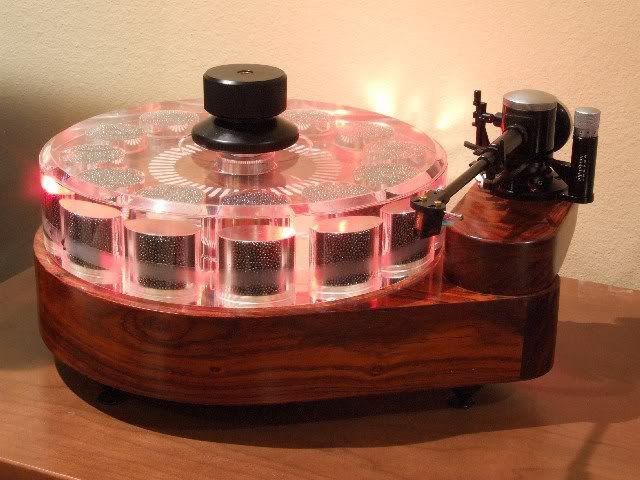Episode 2 - Analog Strikes Back - Ortofon MC Windfeld Cartridge

DarqueKnight
Posts: 6,765
Introduction
In the last episode, we saw how the analog side of my two channel audio system was in grave danger of being relegated to relic status by the substantial upturn in performance of my Cary SACD player. That potential situation could be further facilitated by the fact that I'm not into analog that much anywaySIZE="1"]footnote 1[/SIZE.
Danish phonograph cartridge manufacturer Ortofon (the name means "true sound") is a somewhat conservative company and they are not given to hype, hubris, exaggeration, and wild claims. When I first read the uncharacteristically brash literature for their new flagship cartridge, the MC Windfeld, I had to wonder what had gotten into them SIZE="1"]footnote 2[/SIZE. Some good smoke perhaps? To quote from the sales literature:
"You only gain the position as market leader when you base your business on know-how and precision knowledge rather than the voodoo and wishful thinking that characterizes the high-end brands of others in the industry."
Ortofon maintains an extremely low profile in the US market. News of new phono cartridges is almost a word of mouth process. Looking from stateside, one could get the impression that Ortofon is far more interested in their other business endeavors and that they only make cartridges as a sideline hobby. As of this writing, the Windfeld is not even listed on their website (www.ortofon.com), although the 2M, a new cartridge 1/6th the price of the Windfeld, is shown on the website front page. Why so secretive about a cartridge of this caliber? Have I been lured into another audio cult?
I have had good experiences with Ortofon cartridges. I like their neutrality and excellent price-to-performance ratio. I started with the Kontrapunkt B, then moved to the Kontrapunkt C, then to the Jubilee. They all had a physical and sonic resemblance to each other. As I moved up the line, I realized greater resolution, lower noise, and a better sound stage.
I received the Windfeld six days ago. It has 42 hours of play time on it. I heard steady sonic changes up to the 33 hour mark and have heard none after that point. Ortofon specifies approximately 50 hours for the suspension mechanism to break in and optimum sound to be realized.
The break in for the Windfeld was accellerated by the use of the Cardas Frequency Sweep and Burn In Record, which is made of a special type of hard vinyl and which contains tracks of vertically and horizontally modulated pink noise for use in cartridge break in. I will discuss the break in procedure in more detail later.
The Windfeld is similar in appearance to the next step down Jubilee and has some sonic similarities, since they share some of the same technologies. However, there are some big differences. Whereas the Jubilee (MSRP $2000) is like a highly paid, financially comfortable and well off man, the Windfeld (MSRP $3400) is like his independently wealthy brother. Like the two brothers, the family resemblance between the Jubilee and Windfeld is readily apparent, but whatever the Jubilee can do the Windfeld can do in much grander fashion. If the Jubilee were fire, the Windfeld would be an explosion, albeit a controlled one.
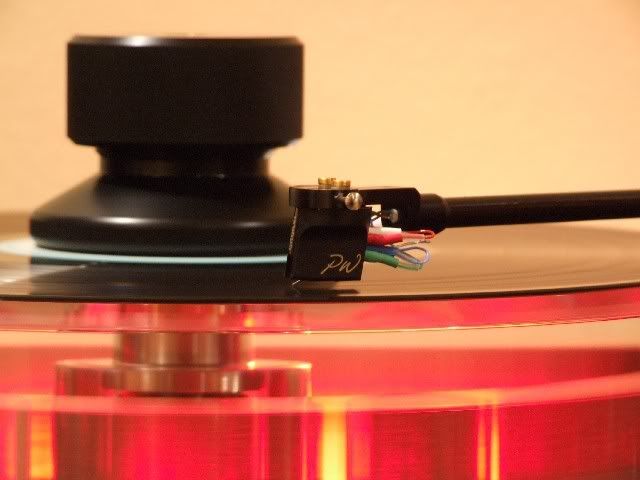
Figure 1. "True sound"...Denmark style.
A Few Words About Packaging
You may be anxious to get to my description of the Windfeld's sound. However, I hope you will indulge me this brief digression so that I can discuss the Windfeld's packaging. I've said before and I'm saying again, nice packaging of this sort makes me feel special.:)
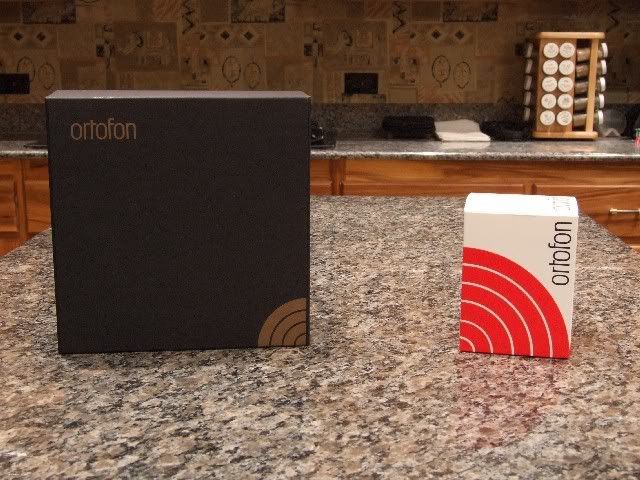
Figure 2. The Windfeld comes in an elegant big black and gold case.
The Jubilee, on the right, comes in a mere box.
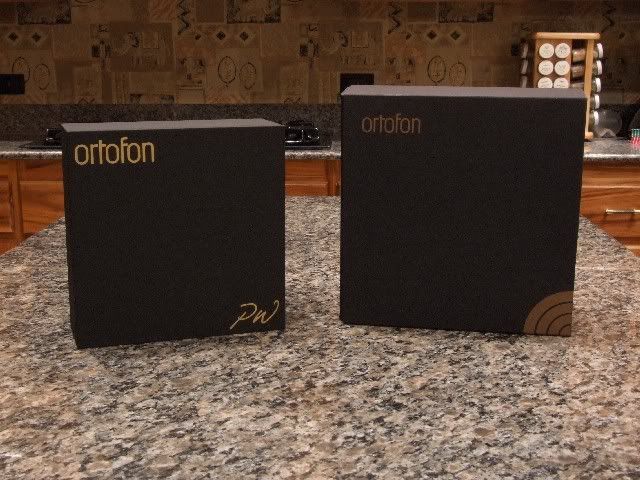
Figure 3. Inside the outer foam padded cardboard case was another
foam and velvet padded plastic case.
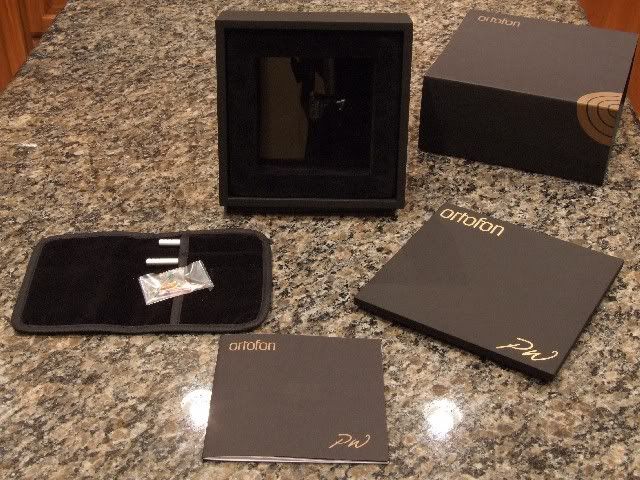
Figure 4. The plastic case contains the cartridge, a velvet pouch for
the installation tools, a full color manual (dated and signed in gold
ink on the back by the inspector).
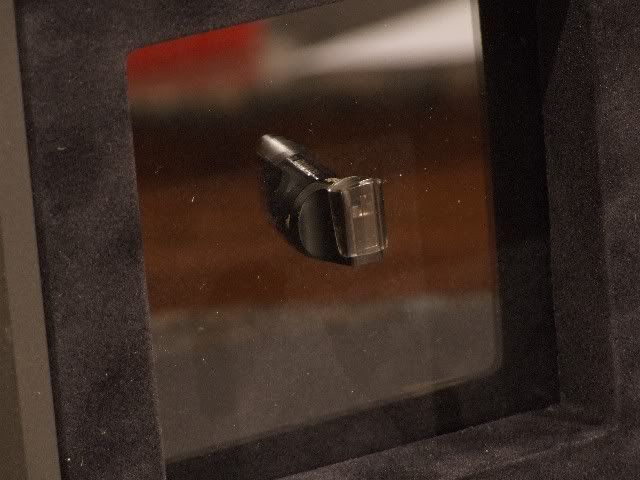
Figure 5. The Windfeld is secured to a 1/8" thick Plexiglas sheet.
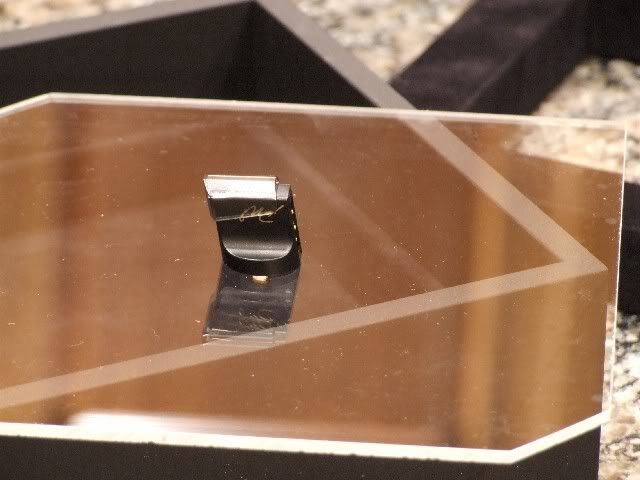
Figure 6. The Windfeld and its Plexiglas mounting pane.
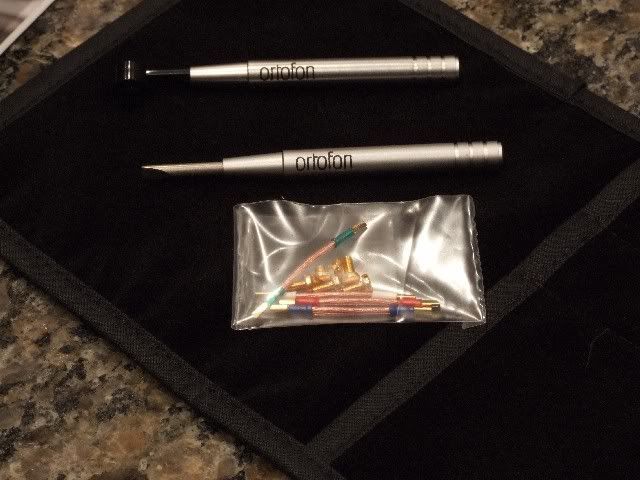
Figure 7. The installation tools are aluminum and come in their own
velvet pouch.
Set Up And Installation
Removing the Jubilee and installing the Windfeld took 28 minutes. My Graham Phantom tonearm came with a set of tweezers for use in inserting the cable ends on the cartridge pins. I use a regular set of tweezers because the Graham tweezers don't grip tight enough. The Windfeld's lead pins, like the Jubilee's, are recessed in a little cove on the back.

Figure 8. With the Windfeld, I found regular tweezers worked better
for inserting tonearm wires.
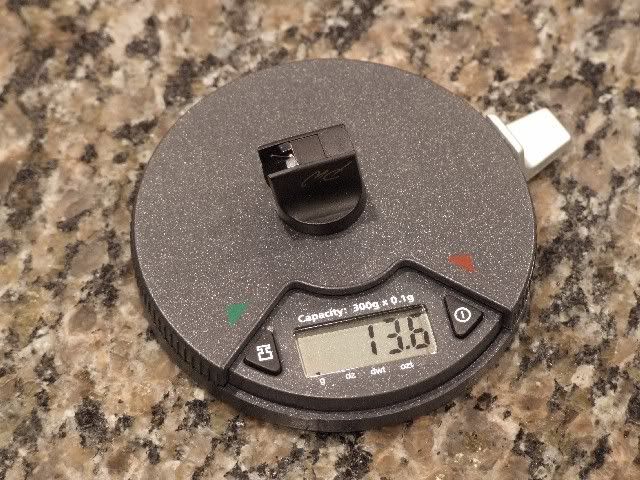
Figure 9. Ortofon specifies a weight of 13 grams for the Windfeld.
Mine actually weighed 13.6 grams.
Ortofon specifies a tracking force (stylus pressure) of 2.3 to 2.8 grams. I chose 2.5 grams and measured with two scales.
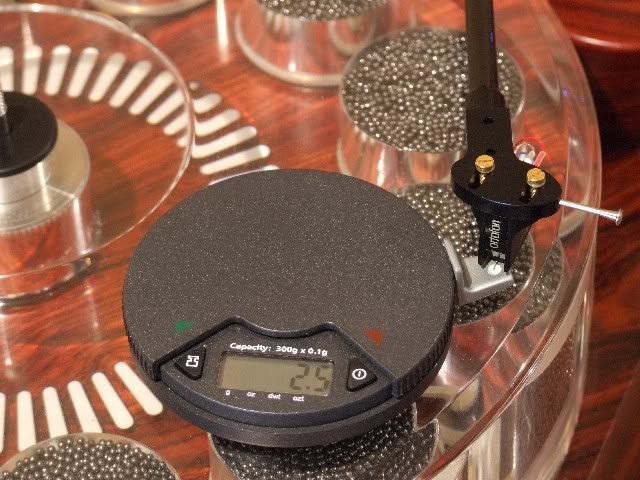
Figure 10. Tracking force measurement with the Blinn scale.

Figure 11. Tracking force measurement with the CR-B5 scale.
I use the Hi-Fi News Analogue Test LP and the Cardas Frequency Sweep and Burn-In Record when setting up cartridges, although, prior to the Windfeld, I had not made much use of the burn in tracks on the Cardas record. On the Hi-Fi News test record, track one of side one is a channel identification test where a man speaks from the center, then the left channel, then the right. With prior cartridges, the man's voice was always in the speaker plane and appeared to come from dead center or from the left and right speakers. With the Windfeld, the man's voice first came from dead center, but three feet in front of the speaker plane. When he said
"My voice is recorded on the left hand channel only and should appear to come from the left hand speaker",
his voice did not come from the left hand speaker. It came from a point suspended in space 50 inches above the floor, 3 feet in front of the left hand speaker and 3 feet to the left of the speaker's vertical center line. The same thing was heard for the right speaker. Figures 12 and 13 show a flag mounted on a tripod that I used to pinpoint the exact position of the phantom voice. The flag was moved around until it matched the location of the voice and then its location was recorded.
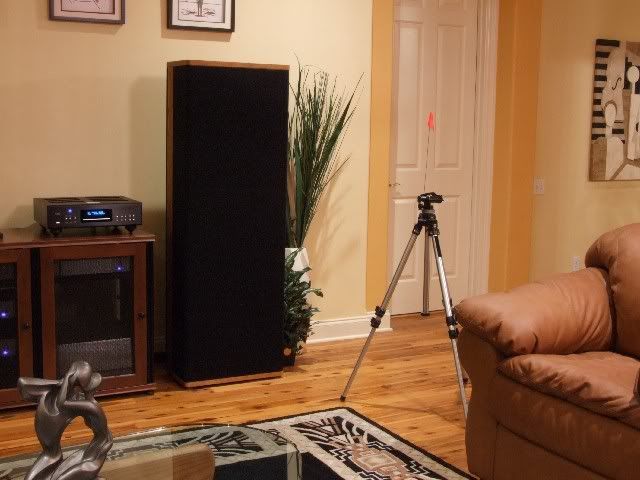
Figure 12. The flag marks the location of the voice heard from the
right channel.
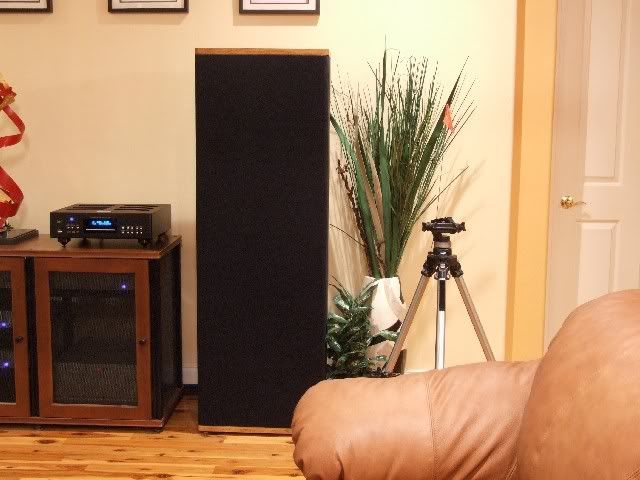
Figure 13. This view shows the location of the phantom voice to the
right of the right speaker.
The Cardas test record has a similar channel identification track. With the Cardas record, the voice was projected 3 feet in front of the speaker plane, but only two feet past the speaker's vertical center lines.
This felt weird because I am not used to hearing voices, particularly voices unaccompanied by music, pushed that far out to the sides of the sound stage. The apparent weight of the phantom voice made it even more weird. I could heard the speaker's voice resonating from his chest cavity just as if he were standing right there in the room.
[Footnote 1] Really? You coulda' fooled me...and I don't fool that easily. If you keep this up, you'll soon be drowning in that river in Egypt, the one the French call "de Nile".
Really? You coulda' fooled me...and I don't fool that easily. If you keep this up, you'll soon be drowning in that river in Egypt, the one the French call "de Nile".
[Footnote 2] Ortofon Throws Down The Gauntlet.
In the last episode, we saw how the analog side of my two channel audio system was in grave danger of being relegated to relic status by the substantial upturn in performance of my Cary SACD player. That potential situation could be further facilitated by the fact that I'm not into analog that much anywaySIZE="1"]footnote 1[/SIZE.
DarqueKnight wrote: »
Analog Repercussions
Figure 3. Beautiful, but lonely...like the Maytag repairman.
I used to spin vinyl approximately 6 hours a week...mostly on the weekends. It was like a special treat. Since my cartridge stylus is a consumable, I keep a log of my analog play. After the big change [Cary CD 306 SACD player break in] at the end of February, I logged four hours on my turntable in March and none in April. If the 306 Pro is the whiz bang that Cary, and others, are making it out to be, vinyl might become a relic type, sporadic type thing for me.
Danish phonograph cartridge manufacturer Ortofon (the name means "true sound") is a somewhat conservative company and they are not given to hype, hubris, exaggeration, and wild claims. When I first read the uncharacteristically brash literature for their new flagship cartridge, the MC Windfeld, I had to wonder what had gotten into them SIZE="1"]footnote 2[/SIZE. Some good smoke perhaps? To quote from the sales literature:
"You only gain the position as market leader when you base your business on know-how and precision knowledge rather than the voodoo and wishful thinking that characterizes the high-end brands of others in the industry."
Ortofon maintains an extremely low profile in the US market. News of new phono cartridges is almost a word of mouth process. Looking from stateside, one could get the impression that Ortofon is far more interested in their other business endeavors and that they only make cartridges as a sideline hobby. As of this writing, the Windfeld is not even listed on their website (www.ortofon.com), although the 2M, a new cartridge 1/6th the price of the Windfeld, is shown on the website front page. Why so secretive about a cartridge of this caliber? Have I been lured into another audio cult?
I have had good experiences with Ortofon cartridges. I like their neutrality and excellent price-to-performance ratio. I started with the Kontrapunkt B, then moved to the Kontrapunkt C, then to the Jubilee. They all had a physical and sonic resemblance to each other. As I moved up the line, I realized greater resolution, lower noise, and a better sound stage.
I received the Windfeld six days ago. It has 42 hours of play time on it. I heard steady sonic changes up to the 33 hour mark and have heard none after that point. Ortofon specifies approximately 50 hours for the suspension mechanism to break in and optimum sound to be realized.
The break in for the Windfeld was accellerated by the use of the Cardas Frequency Sweep and Burn In Record, which is made of a special type of hard vinyl and which contains tracks of vertically and horizontally modulated pink noise for use in cartridge break in. I will discuss the break in procedure in more detail later.
The Windfeld is similar in appearance to the next step down Jubilee and has some sonic similarities, since they share some of the same technologies. However, there are some big differences. Whereas the Jubilee (MSRP $2000) is like a highly paid, financially comfortable and well off man, the Windfeld (MSRP $3400) is like his independently wealthy brother. Like the two brothers, the family resemblance between the Jubilee and Windfeld is readily apparent, but whatever the Jubilee can do the Windfeld can do in much grander fashion. If the Jubilee were fire, the Windfeld would be an explosion, albeit a controlled one.

Figure 1. "True sound"...Denmark style.
A Few Words About Packaging
You may be anxious to get to my description of the Windfeld's sound. However, I hope you will indulge me this brief digression so that I can discuss the Windfeld's packaging. I've said before and I'm saying again, nice packaging of this sort makes me feel special.:)

Figure 2. The Windfeld comes in an elegant big black and gold case.
The Jubilee, on the right, comes in a mere box.

Figure 3. Inside the outer foam padded cardboard case was another
foam and velvet padded plastic case.

Figure 4. The plastic case contains the cartridge, a velvet pouch for
the installation tools, a full color manual (dated and signed in gold
ink on the back by the inspector).

Figure 5. The Windfeld is secured to a 1/8" thick Plexiglas sheet.

Figure 6. The Windfeld and its Plexiglas mounting pane.

Figure 7. The installation tools are aluminum and come in their own
velvet pouch.
Set Up And Installation
Removing the Jubilee and installing the Windfeld took 28 minutes. My Graham Phantom tonearm came with a set of tweezers for use in inserting the cable ends on the cartridge pins. I use a regular set of tweezers because the Graham tweezers don't grip tight enough. The Windfeld's lead pins, like the Jubilee's, are recessed in a little cove on the back.

Figure 8. With the Windfeld, I found regular tweezers worked better
for inserting tonearm wires.

Figure 9. Ortofon specifies a weight of 13 grams for the Windfeld.
Mine actually weighed 13.6 grams.
Ortofon specifies a tracking force (stylus pressure) of 2.3 to 2.8 grams. I chose 2.5 grams and measured with two scales.

Figure 10. Tracking force measurement with the Blinn scale.

Figure 11. Tracking force measurement with the CR-B5 scale.
I use the Hi-Fi News Analogue Test LP and the Cardas Frequency Sweep and Burn-In Record when setting up cartridges, although, prior to the Windfeld, I had not made much use of the burn in tracks on the Cardas record. On the Hi-Fi News test record, track one of side one is a channel identification test where a man speaks from the center, then the left channel, then the right. With prior cartridges, the man's voice was always in the speaker plane and appeared to come from dead center or from the left and right speakers. With the Windfeld, the man's voice first came from dead center, but three feet in front of the speaker plane. When he said
"My voice is recorded on the left hand channel only and should appear to come from the left hand speaker",
his voice did not come from the left hand speaker. It came from a point suspended in space 50 inches above the floor, 3 feet in front of the left hand speaker and 3 feet to the left of the speaker's vertical center line. The same thing was heard for the right speaker. Figures 12 and 13 show a flag mounted on a tripod that I used to pinpoint the exact position of the phantom voice. The flag was moved around until it matched the location of the voice and then its location was recorded.

Figure 12. The flag marks the location of the voice heard from the
right channel.

Figure 13. This view shows the location of the phantom voice to the
right of the right speaker.
The Cardas test record has a similar channel identification track. With the Cardas record, the voice was projected 3 feet in front of the speaker plane, but only two feet past the speaker's vertical center lines.
This felt weird because I am not used to hearing voices, particularly voices unaccompanied by music, pushed that far out to the sides of the sound stage. The apparent weight of the phantom voice made it even more weird. I could heard the speaker's voice resonating from his chest cavity just as if he were standing right there in the room.
[Footnote 1]
 Really? You coulda' fooled me...and I don't fool that easily. If you keep this up, you'll soon be drowning in that river in Egypt, the one the French call "de Nile".
Really? You coulda' fooled me...and I don't fool that easily. If you keep this up, you'll soon be drowning in that river in Egypt, the one the French call "de Nile".[Footnote 2] Ortofon Throws Down The Gauntlet.
Proud and loyal citizen of the Digital Domain and Solid State Country!
Post edited by DarqueKnight on
Comments
-
The Sound-No Voodoo And No Wishful Thinking
Prior to removing the Jubilee, I listened to five tracks from five different LP's and made notes and sketches regarding the sound and the placement of instruments and voices in the sound field. I played the same tracks with the Windfeld and noted the differences. A Radio Shack analog sound level meter was used to measure and adjust sound levels. My first impressions of the Windfeld compared to the Jubilee were:
1. More quiet with blacker backgrounds.
2. Much, much more image weight.
3. Bass was greater in quality and quantity. The Windfeld provides more tactile bass sensation.
4. Vastly superior spatial properties. Much more holographic and three-dimensional.
5. Glassy coated high frequencies, but not rolled off, just constrained.
6. Less bass definition.
7. Measurably less volume on the order of an average 2 to 3 dB.
8. More liquid midrange.
9. More fine detail in the midrange.
10. More sharply defined and audible reflections from walls of the recording space.
11. Instruments and vocals were further spread out laterally, front to back, and vertically.
12. Extremely coherent sound stage. You know how, if you are standing in front of your stereo system and you walk and stand in front of either speaker, most of the center image will quickly follow you and deposit itself in front of the speaker you are standing in front of? When I did this with the Windfeld, the center image reluctantly followed me. If I stood 17 feet back from the point between the speakers and walked to a position in front of either speaker, the center image would slowly follow me. However, rather than most of the center image depositing itself in front of whichever speaker I was standing in front of, it would "stretch" from the center to whichever speaker I was standing in front of.
If I didn't know better, I would have thought Ortofon developed the Windfeld in consultation with Polk's SDA loudspeaker designers. The synergy between them is phenomenal.
Even though the sound level of the Windfeld was initially 2 to 3 dB lower than the Jubilee, I could more clearly hear details such as the subtle inhaling sounds a singer makes between phrases and the trailing edges of words within and at the end of phrases.
The Kontrapunkts and Jubilee were thin sounding with anemic bass until broken in (after about 30 hours). The Windfeld sounded full bodied immediately upon installation, although there was some constriction at both ends of the frequency spectrum.
After 2.5 hours of play on the first day of use, the volume of the Windfeld had increased until it was only 1 DB below that of the Jubilee. That agreed with the differences in output voltage between the two cartridges.
I logged eight hours of play on day one. Seven hours was music and one hour was one of the pink noise tracks of the Cardas test record. The Cardas record is made from a special wear resistant hard vinyl and the pink noise tracks are designed specifically for cartridge burn in. The tracks are "locked" grooves wherein the stylus will stay in a specific grove until it is lifted out. Therefore, the user can let their turntable run for as long as desired. This relieves the user from having to turn over the record every 22 minutes or so and avoids wear on the user's records. Also, since pink noise has higher amplitudes in the lower frequencies and since lower frequencies cause greater stylus and cantilever travel, the cartridge will get a more thorough workout than it would playing (most forms of) music.
Because of the heat generated by the friction of the stylus against the record grooves, Ortofon recommends letting the stylus "rest" for 15 minute periods during long playing sessions. I would change grooves every 15 minutes during each one hour pink noise session and have a 5 minute rest break after each hour of pink noise or music play. After just one hour of pink noise, the bass definition and speed improved considerably. Day one consisted of 7 hours of music and 1 hour of pink noise.
Day two consisted of 1 hour of pink noise and 4.5 hours of music. More of the constriction in the bass and high frequencies had melted away.
Day three consisted of 2 hours of pink noise and 2 hours of music. The glassy coating on the high frequencies was almost gone.
Day four consisted of 3 hours of pink noise and 2.5 hours of music. Some midrange congestion on musically dense tracks can still be heard. The high frequency constriction was gone.
Day five consisted of 3 hours of pink noise and 5 hours of music. Midrange congestion was gone. Bass definition was still lagging behind that of the Jubilee. After the 29th hour of play, the bass definition equaled the Jubilee. I also now heard more pronounced track to track variation in sound quality.
Day six consisted of 3 hours of pink noise and 2 hours of music. After the 33rd hour, on some records, certain percussion instruments that were formerly in the speaker plane came forward 1 foot.
Day seven consisted of 4 hours of pink noise and 2 hours of music. No changes heard. I assume break in is complete, but will continue to listen for differences until the 55th hour and will post a follow up.
After the 33rd hour (21 hours of music + 12 hours of pink noise), I heard no sonic aberrations whatsoever. No grit. No grain. No stress. No strain. No matter what I played. From screeching, screaming alto saxophone to growling, grumbling, rumbling synthesized bass and all points in between and beyond. The Windfeld's performance exceeded that of the Jubilee in every respect. Thank you Ortofon.:)
One word of caution: If you have a particular coloration that you enjoy, you probably will not like the Windfeld. It does a highly commendable job of getting out of the way and letting your hear the record.
I have read reports from other Windfeld users that it sounds "less lively" than the Jubilee. That is not my opinion and experience. The Windfeld sounds more accurate in the high frequencies and is almost as full of life as life itself.
Was It Worth The Cash?
In high performance anything, whether it's audio or gourmet coffee, the law of diminishing returns often rears its hideous head. While there often isn't a 1:1 or better correlation between the benefits and costs of a higher performance alternative, many enthusiasts, of anything, feel that the added enjoyment brought by even an incremental performance improvement justifies the extra expense.
In the case of the Windfeld, its MSRP is 1.7X the MSRP of the Jubilee. However, the extra realism, accuracy, detail, image weight and stability, sound stage quality and bass slam are much, much better. How much better? That depends on what your priorities are. If you do not value such things as accuracy, image weight, image stability, and hearing the spit swirling around in a singer's mouth, then the Windfeld is perhaps only 50% better than the Jubilee. If you value realism and fine detail, the the Windfeld is at least 4X better than the Jubilee. Again, it is somewhat difficult to quantify one in terms of the other because they are two classes of cartridge. The analogy of the differences between the well off upper middle class man and his independently wealthy brother provides more insight. The Windfeld really is in a class far above anything else made by Ortofon and is the best of the high performance cartridges I have heard to date.
Some audio enthusiasts will be discouraged by the MSRP of $3,400, even if they can well afford it. They may have a mental block against spending that much money for a tiny little phono cartridge. It may help to think of it this way: Over the 2000 hour life of the Windfeld, the $3,400 retail price works out to only $1.70 per hour. This is much, much less than the average hourly price paid for matinProud and loyal citizen of the Digital Domain and Solid State Country! -
The break in process spanned nine days and comprised 55 hours of play broken down as follows: 29 hours of music and 26 hours of pink noise (16 hours horizontally modulated and 10 hours vertically modulated). The amount of music and pink noise played during the burn in process was arbitrarily chosen. Burn in would have occurred even sooner had I used the the Cardas record more and done less listening to music.:) The burn in tracks of the Cardas Frequency Sweep and Burn-In Record were a valuable tool in accelerating the burn in process.
I heard no sonic aberrations after the 33rd hour and the performance of the Windfeld by then exceeded that of the Jubilee in every performance aspect.
I heard no further changes until the 44th hour, when the apparent loudness of the sound increased, but the sound pressure level remained the same.
From the 44th to the 55th hour, no changes were heard.
To summarize the burn in process:
Day 1
7 hours of music and 1 hour of pink noise. Sound level increased. Bass speed and definition increased considerably.
8 hours total.
Day 2
4.5 hours of music and 1 hour of pink noise (horizontally modulated). More of the constriction in the bass and high frequencies had melted away.
13.5 hours total.
Day 3
2 hours of music and 2 hours of pink noise (1 hour horizontally modulated and 1 hour vertically modulated). The glassy coating on the high frequencies was almost gone.
17.5 hours total
Day 4
2.5 hours of music and 3 hours of pink noise (2 hours horizontally modulated and 1 hour vertically modulated). Some midrange congestion on musically dense tracks can still be heard. The high frequency constriction was gone.
23 hours total
Day 5
5 hours of music and 3 hours of pink noise (2 hours horizontally modulated and 1 hour vertically modulated). Midrange congestion was gone. Bass definition was still lagging behind that of the Jubilee. After the 29th hour of play, the bass definition equaled the Jubilee. I also heard more pronounced track to track variation in sound quality.
31 hours total
Day 6
2 hours of music and 3 hours of pink noise (2 hours horizontally modulated and 1 hour vertically modulated). After the 33rd hour, on some records, certain percussion instruments that were formerly in the speaker plane came forward 1 foot. The Windfeld's performance now exceeded that of the Jubilee in every performance aspect.
36 hours total
Day 7
2 hours of music and 4 hours of pink noise (2 hours horizontally modulated and 2 hours vertically modulated). No changes heard.
42 hours total
Day 8
2 hours of music and 5 hours of pink noise (3 hours horizontally modulated and 2 hours vertically modulated). After the first two hours of burn in play (after the 44th hour), the sound was apparently louder, although the sound pressure level measured the same.
49 hours total
Day 9
2 hours of music and 4 hours of pink noise (2 hours horizontally modulated and 2 hours vertically modulated).
No changes heard.
Totals
55 hours total burn in play time - 29 hours music, 26 hours pink noise (16 hours horizontally modulated and 10 hours vertically modulated)Proud and loyal citizen of the Digital Domain and Solid State Country! -
Jaw dropping review!! Enjoy that fine cartridge.
 I am ecstatic with my analog sound thru the 1.2's. My SACD gets very little time.
I am ecstatic with my analog sound thru the 1.2's. My SACD gets very little time. -
Man, the only thing that comes to mind is that you are waaaaaay out of my league. What this translates to in mechanic terms, is that while I know how to change the oil in my car, you are the chief mechanic on a Formula One.
JoeAmplifiers: 1-SAE Mark IV, 4-SAE 2400, 1-SAE 2500, 2-SAE 2600, 1-Buttkicker BKA 1000N w/2-tactile transducers. Sources: Sony BDP CX7000es, Sony CX300/CX400/CX450/CX455, SAE 8000 tuner, Akai 4000D R2R, Technics 1100A TT, Epson 8500UB with Carada 100". Speakers:Polk SDA SRS, 3.1TL, FXi5, FXi3, 2-SVS 20-29, Yamaha, SVS center sub. Power:2-Monster HTS3500, Furman M-8D & RR16 Plus. 2-SAE 4000 X-overs, SAE 5000a noise reduction, MSB Link DAC III, MSB Powerbase, Behringer 2496, Monarchy DIP 24/96. -
Reviews of this calibre and the info garnered on this forum in general are why I keep coming back. Way out of my pasture but this is a stellar review.
-
Agreed...I read every word of that review, and although it's over my head, it was an interesting read and puts into perspective the level that one can attain in the audio world.
JoeAmplifiers: 1-SAE Mark IV, 4-SAE 2400, 1-SAE 2500, 2-SAE 2600, 1-Buttkicker BKA 1000N w/2-tactile transducers. Sources: Sony BDP CX7000es, Sony CX300/CX400/CX450/CX455, SAE 8000 tuner, Akai 4000D R2R, Technics 1100A TT, Epson 8500UB with Carada 100". Speakers:Polk SDA SRS, 3.1TL, FXi5, FXi3, 2-SVS 20-29, Yamaha, SVS center sub. Power:2-Monster HTS3500, Furman M-8D & RR16 Plus. 2-SAE 4000 X-overs, SAE 5000a noise reduction, MSB Link DAC III, MSB Powerbase, Behringer 2496, Monarchy DIP 24/96. -
Awesome write up and analysis Ray as usual. It gets me wondering how it would sound in my rig, however, I love my ZYX Airy 3. Too bad I can't do an A/B with the Ortofon as they both fall around the same price range and I can't afford both.
Congrats on your find and your renewed interest in vinyl. BTW thanks for the free press on The Clamp.
